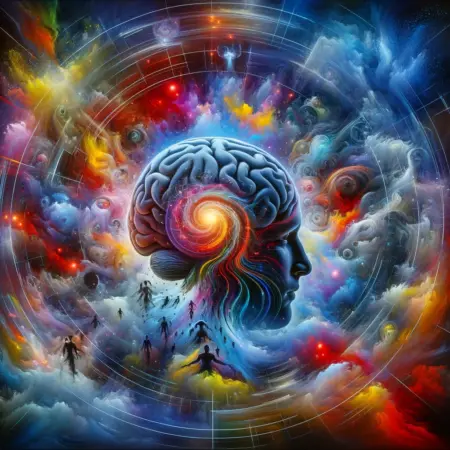The term abreaction was first used in psychoanalytic literature by Joseph Breuer and Sigmund Freud in their Studies in hysteria. According to Clara Thompson. Freud “established abreaction through free association as a means of undoing the process of repression.

The beneficial consequence of rediscovering the submerged memory is probably due to the release of the pent-up emotional content of the memory that had never been fully expressed or recognized but that, nevertheless, affects the person’s thinking and behavior. The discharge of affect is probably an epiphenomenon. Because most certainly the cognitive element is more important in leading to changes in thought and behavior than the emotional reaction. By bringing previously repressed and unknown conflicts to consciousness the problem is, in the terms of psychoanalytic theory, “worked through” (i.e.. the patient in reliving the experience is freed from the “strangled” emotion).
Abreaction is ordinarily thought of as a part of the more general phenomenon of catharsis. Some authorities equate the two terms, others reserve catharsis for the process and abreaction for the result. Various interpretations of the place of abreaction in psychotherapy have spawned a variety of methodologies among psychotherapeutic innovators that attempt to achieve abreactive effects. Among them are the primal therapy of Arthur Janov and J. L. Moreno’s psychodrama.
Examples of Abreaction
Some examples of abreation can be the discharge of rancor, which can be expressed through revenge, or a negative situation through crying. It should also be remembered that the idea of abreast originated in the historical period of Freud (in this case the late nineteenth century), which, influenced by positivism, believed that there was a sort of finite energy that could be discharged (hydraulic model).
Examples of connection between definition of abreaction and psychopathology
According to Freud and Breuer, if abreaction does not occur , the association between emotion and event persists. If the association remains and abreaction does not occur , a psychopathogenic outcome can develop. Abreaction therefore has a cathartic effect, as if the patient ability and emotions is related to the event and offer the person can deal more easily the moment of crisis.
When abreaction does not work
According to the authors it is difficult in some cases to put abreaction into practice. where the person has suffered particular psychic traumas , such as traumas in which one can not think of a reaction (apparently irreplaceable loss of a loved one), or in cases where the person intentionally did not want to change the event (removal defense mechanism).
Since that time, Breuer and Freud have stressed how important it is that the act can be replaced by language, ” thanks to which affection can be reacted almost in the same way .” They add that in some cases of complaint or confession, only words constitute ” the appropriate reflection “.
They said that, Abreaction is a condition in which the emotional charge of the subconscious mind overflows or explodes out in the form of a particular greeting or behavior. There is a “hard” abreaction in which the emotion comes out so swiftly and the subject is crying, shouting, hitting, punching, squeezing, incensing, clawing, and even kicking. There is also a “soft” abreaction in which the patience just cries slowly. Although the behavior of abreaction is different but that occurs after abreaction is generally the subject of feeling relief . This is called catharsis.
he abreaction-handling techniques we developed at Adi W. Gunawan Institute of Mind Technology are based not on the subconscious mind theory and our research results are based primarily on the thoughts of Helen H. Watkins and refined by the material I learned from Randal Churchill.
In order to produce a permanent therapeutic effect, the following conditions need to be met:
- Abreaction must be performed in the earliest occurrences of the sequence of events resulting in the appearance of emotional and behavioral disorders.
- abreaction must be done thoroughly and thoroughly so that all the emotions contained in the memory of the initial event off everything.
- clients need help to be able to get meaning or wisdom from the incident that he once experienced.
- need to be done memory reconstruction so that stored in the subconscious mind of the client, after therapy, is a positive memory and fun.
Breuer’s results are very important in the context of hypnotherapy because he changed the approach of therapy at that time which only seeks to remove symptoms through suggestions to find and locate the root of the problem.
Abreaction is a psychoanalytical concept that involves the release of repressed emotions and energy by reliving a traumatic experience. It’s often used in therapy to help patients confront and resolve past traumas. Here’s a guide in a tabular format illustrating examples of abreaction in psychology:
| Example Scenario | Traumatic Event | Repressed Emotions | Method of Abreaction | Outcome |
|---|---|---|---|---|
| Case 1: A patient with anxiety | Witnessing a car accident in childhood | Fear, helplessness | Guided imagery and narrative therapy | Patient acknowledges and processes the fear, reducing anxiety symptoms |
| Case 2: Individual with nightmares | Loss of a loved one | Grief, anger | Expressive writing and grief counseling | Patient expresses and confronts grief, leading to improved sleep |
| Case 3: Someone with social phobia | Public speaking embarrassment in school | Shame, inadequacy | Role-playing and exposure therapy | Patient re-experiences and then overcomes feelings of shame |
| Case 4: Veteran with PTSD | Combat experience | Terror, guilt | EMDR (Eye Movement Desensitization and Reprocessing) | Patient processes traumatic memories, reducing PTSD symptoms |
| Case 5: Person with unexplained physical symptoms | Childhood neglect | Sadness, abandonment | Psychodynamic therapy | Patient connects physical symptoms with emotional trauma, leading to symptom relief |
Each example illustrates a different scenario where abreaction could be used as a therapeutic technique. The method of abreaction varies, depending on the nature of the trauma and the individual’s unique psychological makeup. The outcome generally focuses on the patient gaining insight, releasing repressed emotions, and experiencing symptom relief.
Conclusion
In the realm of psychology, abreaction serves as a powerful tool for emotional release and healing. By providing examples of abreaction in therapeutic settings, dream analysis, exposure therapy, hypnotherapy, and art therapy, we have highlighted the diverse applications of this concept. As individuals confront and process their suppressed emotions, they can embark on a journey of healing and self-discovery. Through abreaction, individuals can pave the way for a brighter and emotionally richer future.
